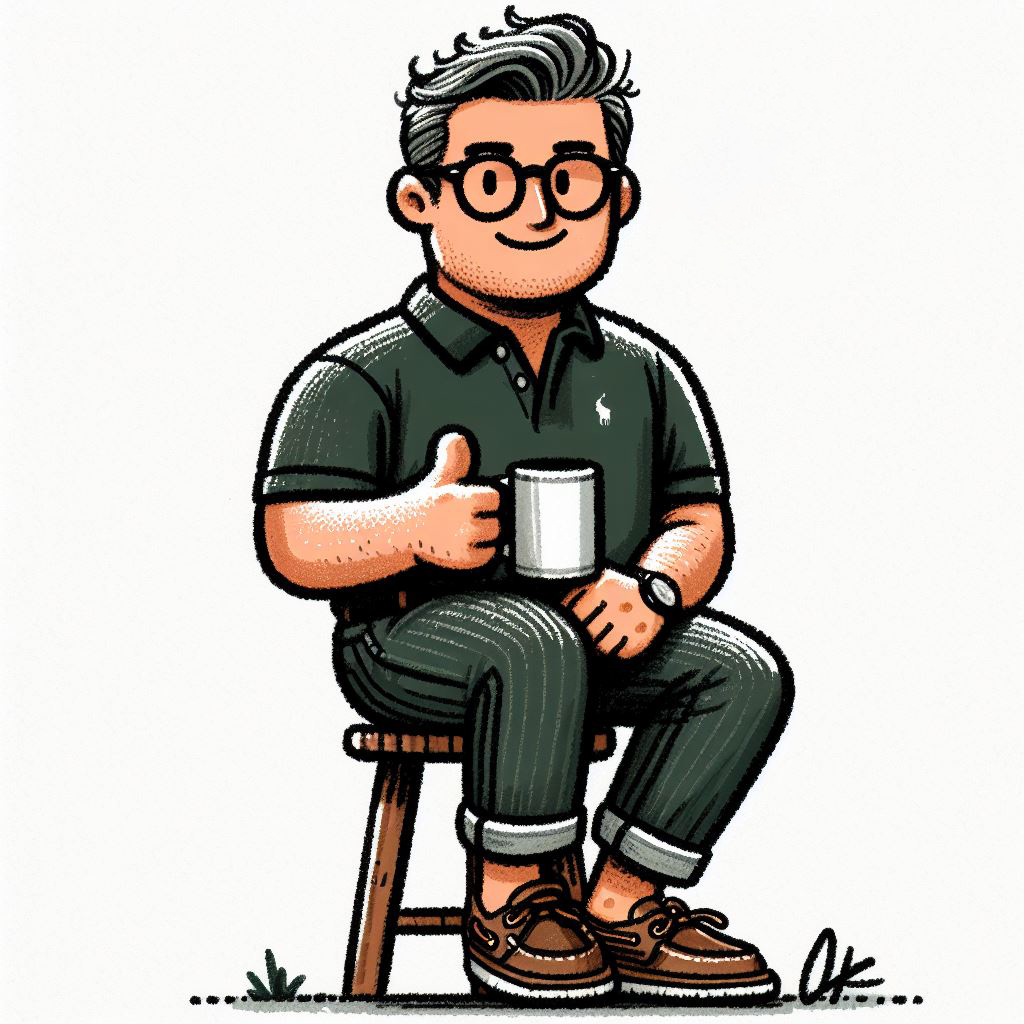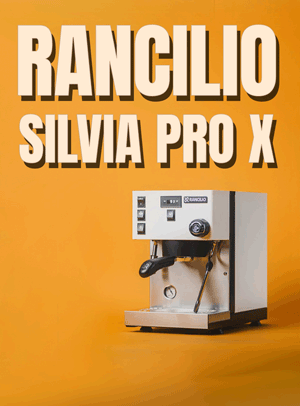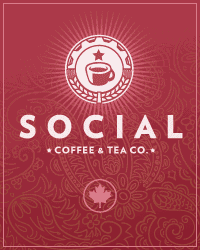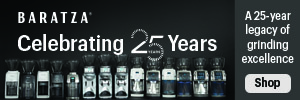I love espresso cups. Love them. But they have to be unique. That’s the crux. And they can’t say “espresso”, with very few exceptions (notably, the Illy collection cups, which do say espresso on some of them, on the bottom where they are signed and numbered). The cup to the right is one of my more valuable possesions as of late – it is the Illy Fossile limited edition collectors cup. I got it off a very nice fellow from Trieste, Italy, through an eBay auction.
I also bought two other cups from him, a cup from Sandro Chi’s Illy Faces series of 1994, and a solo cup called Laietana, which represents a “woman in motion”. I like those cups, but not nearly as much as my Christmas gift this year from my very special significant other: a set of Illy Alien art cups (pictured at the bottom of this column).
These aren’t the only cups I have and treasure. I have two sets of Francis! Francis! first generation collectibles that I hope will be worth major dough some day (mainly due to the packing crate, or tin, they came in). I also have all the current line of Saeco art espresso cups, which at $40 per set of two, ain’t cheap. (why, that’s $63 Canadian dollars for two tiny espresso cups!).
And just to boost my snobbery quotient as high as I can, I use another set of Illy Art Cups, the Schwung collection by Peter Roersh, as my daily beverage holder of choice.
So why am I spending as much as $100 or more on a single espresso cup, and as much as $200 or more on sets of six? Let me tell you, my friend:
It starts with the caffeine…
Actually, it starts with the lack thereof. See, most people who know of my coffee obsession think I’m in it for the caffeine, or hopped up on it, or something like that. But that is not the case – first, I have maybe 2 ristrettos a day, an Americano, and a cappuccino in the evening. That isn’t a lot of caffeine joltage. Second, the kinds of beans I use, and the kinds of brewing methods I practice do not allow a lot of caffeine to enter my cup. Espresso, when made properly simply doesn’t let it happen. So why am I obsessed? I’d like to say purely for the taste, but that isn’t the overriding factor.
I’m in it for the artistry.
And the ultimate expression of artistry in coffee is espresso.
See, the epitome of what coffee can be is the espresso beverage. The goal is to make a drink that tastes as good as roasted coffee smells. You love that smell, don’t you? It’s an aphrodisiac of sorts – not sexual, but definitely sensual. And oh man, to get that in the cup, to taste it is like the holy grail.
Following the holy grail…
It’s a sad fact of reality that most people think of espresso as this bitter, super jolt of caffeine that mainly Italians and people from Seattle drink. You know what? That bitter, jolty stuff isn’t espresso. Not even to the Italians. That “leaves me gagging” drink that most people think of as espresso is actually garbage. A ruse. A fake. A fraud.
Real espresso is the best essence of what the roasted coffee bean can provide, in a super concentrated format. A properly crafted espresso is naturally sweet, not in the sugary sense of the word, but in the refined, won’t bite you, leaves a great aftertaste sense. When you make an espresso in the proper fashion, you bring out all the best flavour colloids and oils and aromas into the cup (to find out what a proper espresso is, in the modern sense of the term and artistry, wait till next column).
When you do that 25 second pour, you don’t allow enough water exposure time to draw off the bitters that live inside roasted coffee. And surprise surprise, that properly made drink didn’t allow enough time to draw off very much caffeine, which is a very resistant chemical that doesn’t like to easily give up its home inside the ground coffee.
You heard me right: a properly crafted double shot of espresso has about one third to one quarter the caffeine content of a typical 12oz mug of Folgers. How is this possible? The brewing time is a big factor, but the beans are an even bigger one: high grade arabica beans, the kind of beans I use 90% of the time, have less caffeine than the beans typically used in Folgers, or Maxwell House, or most grocery store coffee – be it whole bean, ground, or instant. That bean is called robusta. Robusta has a lot more caffeine content than Arabica beans, but again, I’ll go into much more detail on this in another article.
Seeking the elusive God Shot…
Espresso taste function is an important thing for me, but as I said above, the artistry of espresso is as important, if not more so. Making a finely crafted espresso really is an art. There’s science involved, I won’t fool you, but art wins over science in this one.
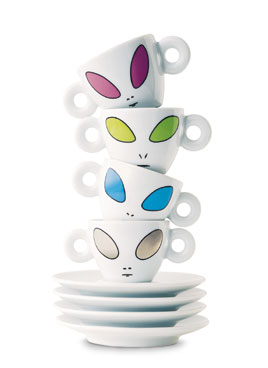
There are so many skills required, from the minute to the exacting. There is so much training involved, it isn’t funny (well, it can be). And let me tell you, a lot of practice and literally hundreds, if not thousands of pounds of coffee are needed in the pursuit of those skills and that artistry. The training, practice and coffee is all needed to produce something that has recently been given a very apt moniker: the God Shot.
The God Shot is a term given to these ultimate espresso shots, and the term was more or less invented in the online forum alt.coffee a few years ago. My own definition for it is this: it refers to a shot of espresso so exceptional, that it must have been blessed by God himself, who must also be an espresso lover. It is that good.
Some of the world’s best baristas only achieve god shots about one out of eight or ten attempts. Some fool themselves into thinking they get it one out of five or even more frequently. Myself? I’m lucky if I hit one out of fifteen. Don’t get me wrong or think I’m trying to be humble here – most of the espresso shots I craft are good. Some are great. A few are exceptional. But once you’ve had a god shot, you’ll know why those stand out.
I have tried hard to find a way to describe this almost mythical God Shot, and the best way I can is this way: Imagine for a second that you are a person who does need sugar in their coffee. It’s bitter otherwise, right? Most Italians take sugar in their espresso, partially because Italy has a tradition of using a fair amount of robusta in their roasts. And trust me, there’s no shame or “wrong” in putting a little adulterant called sugar in your coffee. Now imagine for a second drinking that coffee sans sugar. Makes your lips purse, right? Makes you wince, probably.
Well, if you are that sugar person, a God Shot is a drink you, mister sweetener, can drink without sugar. The espresso is that naturally sweet, with a mindblowing and lasting finish with no sour aftertastes, and complexities in the mouth that are unheard of. Betcha never thought it’d be possible, huh? A shot of espresso you can drink without a sweetener!
Why is this fabled shot so fleeting? One way to look at it is the complexity that the coffee bean itself has. There are references to the chemical breakdown of the green coffee bean and the roasted coffee bean. Some chemical analysis in the past has pegged the number of identifiable substances in the coffee bean at 3,000. Others quote a 2,000 number. The Illy family, respected researchers on espresso science, (website) say that the aromas in coffee hold 800 uniquely identifiable components on their own, forget the rest of the bean! By comparison, a quality red wine may hold 300, 400 components, total.
That my friend, is the makeup of something extremely elusive and fleeting. The perfect shot, the God Shot cannot be done on command. It can only be granted, be destined, be achieved.
And how do you achieve it? How do you attain it? How do you earn it? You’ll have to tune in next week to this column, when I delve into what makes up the perfect espresso shot. I also promise you the answers next week as to why I can justify spending $100 or more on a single espresso cup. I hope you’ll tune in.


